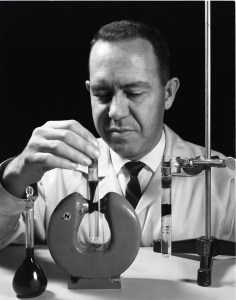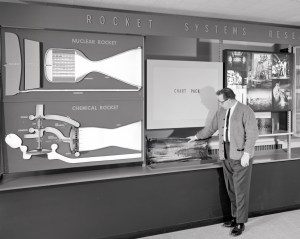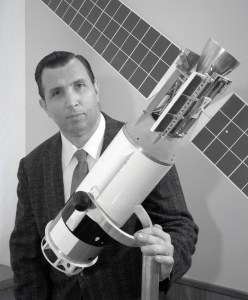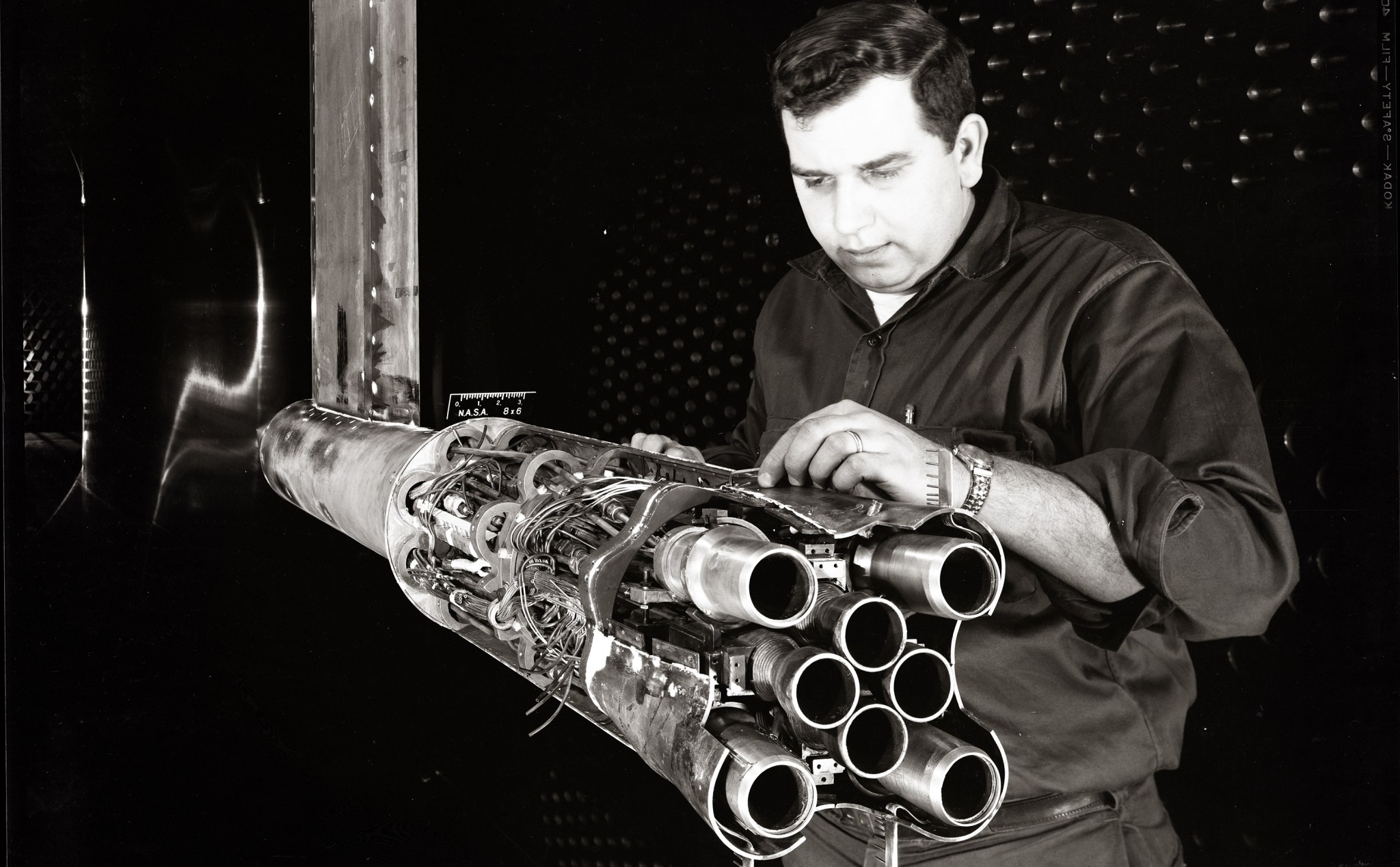
On September 12, 1983, Sam Stein, a retired mechanical engineer, stopped by the Lewis Research Center (today, NASA Glenn) to visit former colleagues. By chance, that very day NASA had issued him an award for inventing a novel fuel injector over two decades earlier. Stein’s coaxial injector became a key component in the hydrogen-oxygen engines that powered the Centaur, Saturn and space shuttle vehicles that were so critical to NASA’s space program.
Stein began his career in 1956, where he designed engine models for testing in the large supersonic wind tunnels. At the time, he and his associates were preparing a Saturn rocket model for a series of base heating tests. They were having difficulty getting the proper fuel-oxidizer mixture in the model’s subscale engine.
While contemplating the problem at his Shaker Heights home, Stein struck upon the concept of a tube within a tube. The configuration, referred to as a “coaxial” or “concentric tube,” allowed the flow of a low-velocity oxidizer through the center tubes and high-velocity fuel through the outer tube. Stein’s invention, which he patented in 1957, produced 99 percent combustion efficiency.
Engineers soon determined that this type of injector was optimal for emerging hydrogen-oxygen engines. Pratt & Whitney first incorporated the coaxial injector in its RL-10 engines, which powered the Centaur rocket. The RL-10’s success led to its use on Rocketdyne’s J-2 for Saturn upper stages and the Space Shuttle Main Engine.
NASA’s program for recognizing outstanding inventions finally caught up to Stein in 1983. Following his retirement in 1970, Stein had relocated to California to become a character actor. Recognizing the coincidence of the Cleveland visit and the arrival of the monetary award, Center Director Andy Stofan personally presented the award to Stein. In his formal letter, Stofan stated, “Your injector concept has proven to be a major technical advance in the field of rocket propulsion. It has been incorporated in all hydrogen-oxygen rocket engines flown by NASA.”
Stein insisted that his injector was just one of many important Lewis inventions. He, himself, held several other patents. He also downplayed the monetary portion of the award, claiming he just wanted something from his time at NASA to show his three grandchildren. “Lewis was the greatest place I ever worked,” he stated. “You just felt the freedom to express yourself and come forth with an idea.” Stein passed away in 1994 at the age of 82.
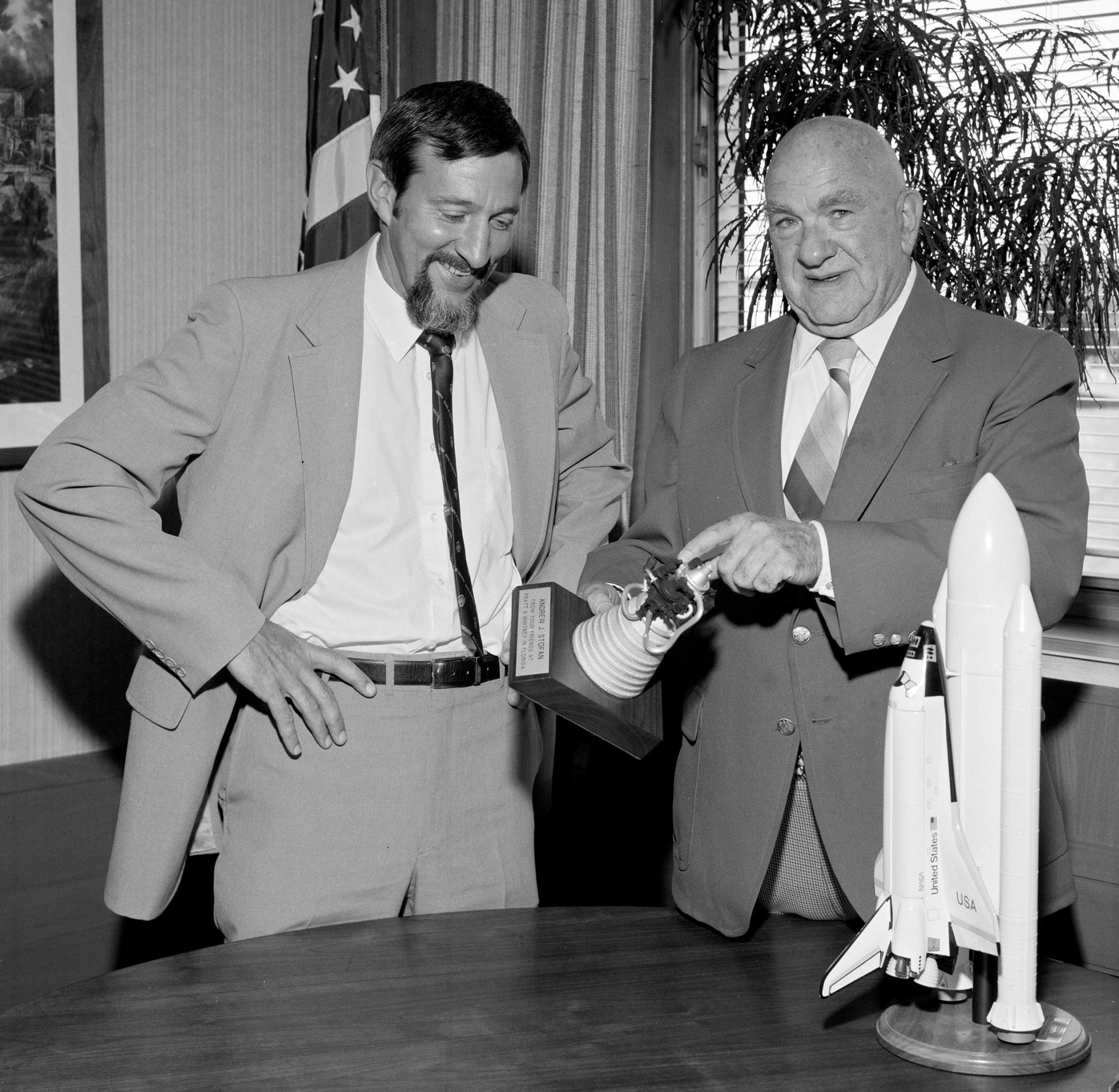
Robert S. Arrighi
NASA’s Glenn Research Center


























